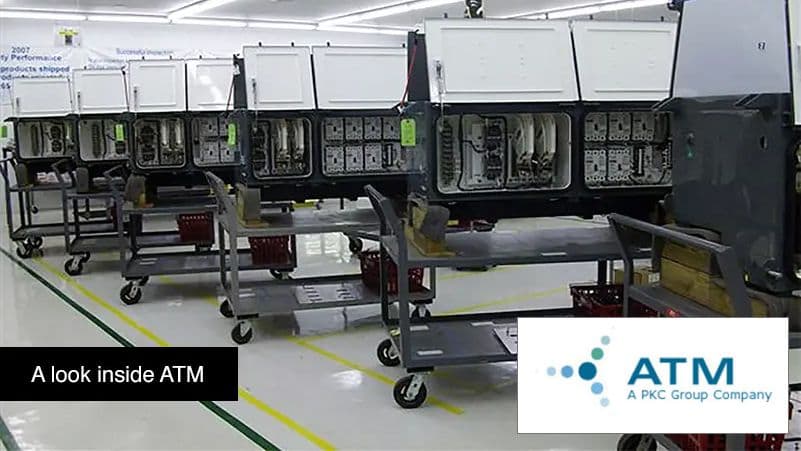Being a competitive player in the Aerospace and Defence industry is no small feat. In an industry where actual lives are depending on the quality of your product, and where you need to be accountable for every piece of an assembly, meeting customer expectations and requirements can be a daunting task. Luckily, manufacturers can find solace in the new Smart Manufacturing technologies appearing in the wake of Industry 4.0. One such example is that of the renowned company ATM. After having learned the advantages of going paperless and adhering to Smart Manufacturing principles, they took their first steps towards becoming a lean manufacturer with VKS and have never looked back.
ATM, founded in 1996 and part of the PKC group, was created to fill the requirements of the rail transit industry. Over time, this ISO 9001:2008 certified company expanded to deliver a growing range of components for aerospace, defense, and mass transit. In order to honor their high standards on increasingly complex assemblies, they started implementing more documentation, highly detailed work instructions, and very thorough inspection checklists into their projects.

Jim McInroy, ATM's Engineering Manager, remembers the system that was first put in place. « Before VKS we used a 'Yellow Folder' system that was mainly Microsoft Word-based. One folder would house the work order's bill of materials, drawings, release forms, work instructions and checklists.» Although the system was functional, it was difficult to ensure that work instructions and procedures were completed exactly as required. It was also a challenge to manage all the separate documents that contained the data related to an assembly. It was in 2015 that Ryan Zimmermann and Spero Zervos approached ATM with a solution to their lean manufacturing needs.
ATM was intrigued by the idea of a software that could not only help them implement lean manufacturing principles and optimise their work instructions, but that would also enable them to store data and deliver the quality and traceability that their clients requested. «The first big project we received after having installed VKS was a series of 8 or 10 different electromagnetic assemblies. The assemblies were highly complex and required the full photo-documentation of multiple unique items that would be used in the build», recalls McInroy. «We chose to use VKS since it allowed us to make each piece traceable. We created guidebooks that showed our operator how to assemble the items and what photographs needed to be taken. Through the use of forms, operators could associate the part serial numbers to the photos by simply scanning them. We really appreciated that our data was in one place and that serial numbers could be used afterwards in the report search filter, allowing us to trace all our parts when needed.»

After this positive experience, ATM was looking forward to integrating VKS into all its assemblies and taking the next step into lean manufacturing. The 'Yellow Folder' system was soon replaced as McInroy explains: «We moved on to the 'Yellow Routing Folder ' system. Each folder contains barcodes to access all the guidebooks required for the work order. When a Routing Folder is sent to a cell, the operator opens it, scans the first guidebook and starts the production. So far the process has been pretty seamless and has required little support. When we do need support however, our VKS account manager replies to our emails faster than anyone I know.»

Even now that VKS is firmly rooted into ATM's culture, the communication and collaboration between them continues. Spero Zervos, ATM's Success Manager, enjoys receiving feedback about the product. «Communication is important. When we get feedback from a client and learn what they want to accomplish with our product, we are able to provide them with best practice methods and think of future enhancements that would benefit them». That feeling is also shared by McInroy. «It has happened more than once where I have seen the VKS release notes and recognized an enhancement based on a suggestion we had made. It is good to know your input is being heard and valued.»
ATM's plans for VKS do not stop at assemblies though. In the future, they are planning to integrate the software into their inspection processes and their test procedures. « We make more and more guidebooks every day », concluded McInroy. « VKS is the path we are taking and we like it ».



